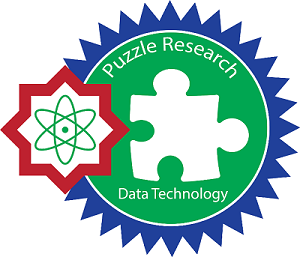ADDITIONAL MENU
Enhanced Fashion-MNIST Classification Using a Hybrid VGG-16-DenseNet121 Architecture
Abstract
This study aims to explore the effectiveness of a hybrid model combining the VGG16 and DenseNet121 architectures for image classification tasks on the Fashion MNIST dataset. This model is designed to leverage the advantages of both architectures to produce richer feature representations. In this study, the performance of the hybrid model is compared with several other architectures, including LeNet-5, VGG-16, ResNet-20, ResNet-50, EfficientNet-B0, and DenseNet-121, using various optimizers such as Adam, RMSProp, AdaDelta, AdaGrad and SGD. The test results indicate that the Adam and SGD optimizers deliver excellent results. The VGG16 + DenseNet121 hybrid model achieved perfect training accuracy 100%, the highest validation accuracy 94.65%, and excellent test accuracy 94.16%. Confusion matrix analysis confirms that this model is capable of correctly classifying the majority of images, although there is some confusion between classes with visual similarities. These findings affirm that a hybrid approach and the appropriate selection of optimizers can significantly enhance model performance in image classification tasks.
Keywords
Comparative Architecture; DenseNet121; Enhanced Fashion; Fashion MNIST; VGG16
Full Text:
PDFReferences
H. Xiao, K. Rasul, and R. Vollgraf, “Fashion-MNIST: a Novel Image Dataset for Benchmarking Machine Learning Algorithms,” Sep. 15, 2017, arXiv: arXiv:1708.07747. Accessed: Jul. 02, 2024. [Online]. Available: http://arxiv.org/abs/1708.07747
M. Kayed, A. Anter, and H. Mohamed, “Classification of Garments from Fashion MNIST Dataset Using CNN LeNet-5 Architecture,” in 2020 International Conference on Innovative Trends in Communication and Computer Engineering (ITCE), Aswan, Egypt: IEEE, Feb. 2020, pp. 238–243. doi: 10.1109/ITCE48509.2020.9047776.
Y. Lecun, L. Bottou, Y. Bengio, and P. Haffner, “Gradient-based learning applied to document recognition,” Proc. IEEE, vol. 86, no. 11, pp. 2278–2324, Nov. 1998, doi: 10.1109/5.726791.
T. Kaur and T. K. Gandhi, “Automated Brain Image Classification Based on VGG-16 and Transfer Learning,” in 2019 International Conference on Information Technology (ICIT), Dec. 2019, pp. 94–98. doi: 10.1109/ICIT48102.2019.00023.
S. Targ, D. Almeida, and K. Lyman, “Resnet in Resnet: Generalizing Residual Architectures,” Mar. 25, 2016, arXiv: arXiv:1603.08029. doi: 10.48550/arXiv.1603.08029.
S. A. Hasanah, A. A. Pravitasari, A. S. Abdullah, I. N. Yulita, and M. H. Asnawi, “A Deep Learning Review of ResNet Architecture for Lung Disease Identification in CXR Image,” Appl. Sci., vol. 13, no. 24, p. 13111, Dec. 2023, doi: 10.3390/app132413111.
M. Tan and Q. Le, “EfficientNet: Rethinking Model Scaling for Convolutional Neural Networks,” in Proceedings of the 36th International Conference on Machine Learning, PMLR, May 2019, pp. 6105–6114. Accessed: Jul. 02, 2024. [Online]. Available: https://proceedings.mlr.press/v97/tan19a.html
T. Ahmad et al., “EfficientNet-Based Robust Recognition of Peach Plant Diseases in Field Images,” Comput. Mater. Contin., vol. 71, no. 1, pp. 2073–2089, 2022, doi: 10.32604/cmc.2022.018961.
N. Hasan, Y. Bao, A. Shawon, and Y. Huang, “DenseNet Convolutional Neural Networks Application for Predicting COVID-19 Using CT Image,” SN Comput. Sci., vol. 2, no. 5, p. 389, Jul. 2021, doi: 10.1007/s42979-021-00782-7.
N. Zakaria, F. Mohamed, R. Abdelghani, and K. Sundaraj, “VGG16, ResNet-50, and GoogLeNet Deep Learning Architecture for Breathing Sound Classification: A Comparative Study,” in 2021 International Conference on Artificial Intelligence for Cyber Security Systems and Privacy (AI-CSP), Nov. 2021, pp. 1–6. doi: 10.1109/AI-CSP52968.2021.9671124.
S. Rana, M. Aeri, V. Kukreja, and R. Sharma, “Integrating EfficientNet and Fine-Tuned DenseNet Models for Advanced Detection and Classification of Guava Diseases,” in 2024 International Conference on Emerging Technologies in Computer Science for Interdisciplinary Applications (ICETCS), Apr. 2024, pp. 1–5. doi: 10.1109/ICETCS61022.2024.10543286.
C. Duan, P. Yin, Y. Zhi, and X. Li, “Image Classification of Fashion-mnist Data Set Based on VGG Network”.
S. S. Kadam, A. C. Adamuthe, and A. B. Patil, “CNN Model for Image Classification on MNIST and Fashion-MNIST Dataset,” J. Sci. Res., vol. 64, no. 02, pp. 374–384, 2020, doi: 10.37398/JSR.2020.640251.
K. Simonyan and A. Zisserman, “Very Deep Convolutional Networks for Large-Scale Image Recognition,” Apr. 10, 2015, arXiv: arXiv:1409.1556. doi: 10.48550/arXiv.1409.1556.
G. Huang, Z. Liu, L. van der Maaten, and K. Q. Weinberger, “Densely Connected Convolutional Networks,” presented at the Proceedings of the IEEE Conference on Computer Vision and Pattern Recognition, 2017, pp. 4700–4708. Accessed: Sep. 18, 2024. [Online]. Available: https://openaccess.thecvf.com/content_cvpr_2017/html/Huang_Densely_Connected_Convolutional_CVPR_2017_paper.html
N. S. Mahajaya, P. D. W. Ayu, and R. R. Huizen, “Pengaruh Optimizer Adam, AdamW, SGD, dan LAMB terhadap Model Vision Transformer pada Klasifikasi Penyakit Paru-paru,” Semin. Has. Penelit. Inform. Dan Komput. SPINTER Inst. Teknol. Dan Bisnis STIKOM Bali, pp. 818–823, Jun. 2024.
C. Desai, “Comparative Analysis of Optimizers in Deep Neural Networks,” Oct. 2020.
E. Okewu, P. Adewole, and O. Sennaike, “Experimental Comparison of Stochastic Optimizers in Deep Learning,” in Computational Science and Its Applications – ICCSA 2019, S. Misra, O. Gervasi, B. Murgante, E. Stankova, V. Korkhov, C. Torre, A. M. A. C. Rocha, D. Taniar, B. O. Apduhan, and E. Tarantino, Eds., Cham: Springer International Publishing, 2019, pp. 704–715. doi: 10.1007/978-3-030-24308-1_55.
D. Irfan, T. S. Gunawan, and W. Wanayumini, “COMPARISON OF SGD, RMSProp, AND ADAM OPTIMATION IN ANIMAL CLASSIFICATION USING CNNs,” Proceeding Int. Conf. Inf. Sci. Technol. Innov. ICoSTEC, vol. 2, no. 1, Art. no. 1, Feb. 2023, doi: 10.35842/icostec.v2i1.32.
Cung, “Classification and detection of COVID-19 X-Ray images based on DenseNet and VGG16 feature fusion,” Biomed. Signal Process. Control, vol. 77, p. 103772, Aug. 2022, doi: 10.1016/j.bspc.2022.103772.
L. A. Andika, H. Pratiwi, and S. S. Handajani, “KLASIFIKASI PENYAKIT PNEUMONIA MENGGUNAKAN METODE CONVOLUTIONAL NEURAL NETWORK DENGAN OPTIMASI ADAPTIVE MOMENTUM,” Indones. J. Stat. Its Appl., vol. 3, no. 3, pp. 331–340, Oct. 2019, doi: 10.29244/ijsa.v3i3.560.
H. Hendriyana and Y. H. Maulana, “Identification of Types of Wood using Convolutional Neural Network with Mobilenet Architecture,” J. RESTI Rekayasa Sist. Dan Teknol. Inf., vol. 4, no. 1, Art. no. 1, Feb. 2020, doi: 10.29207/resti.v4i1.1445.
DOI: http://dx.doi.org/10.24014/ijaidm.v8i1.32225
Refbacks
- There are currently no refbacks.
Office and Secretariat:
Big Data Research Centre
Puzzle Research Data Technology (Predatech)
Laboratory Building 1st Floor of Faculty of Science and Technology
UIN Sultan Syarif Kasim Riau
Jl. HR. Soebrantas KM. 18.5 No. 155 Pekanbaru Riau – 28293
Website: http://predatech.uin-suska.ac.id/ijaidm
Email: ijaidm@uin-suska.ac.id
e-Journal: http://ejournal.uin-suska.ac.id/index.php/ijaidm
Phone: 085275359942
Journal Indexing:
Google Scholar | ROAD | PKP Index | BASE | ESJI | General Impact Factor | Garuda | Moraref | One Search | Cite Factor | Crossref | WorldCat | Neliti | SINTA | Dimensions | ICI Index Copernicus
IJAIDM Stats










